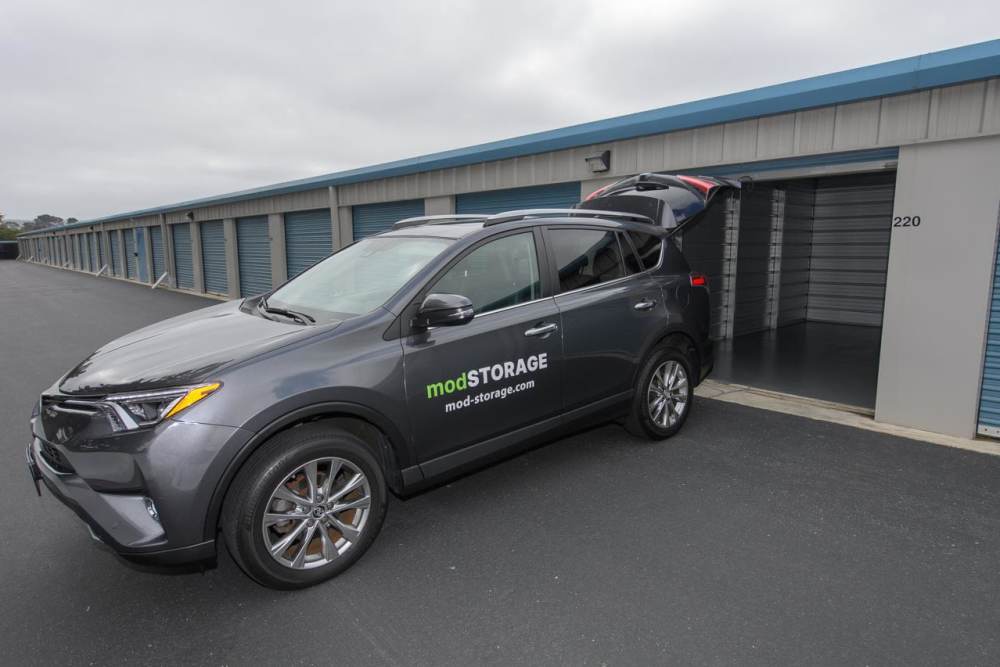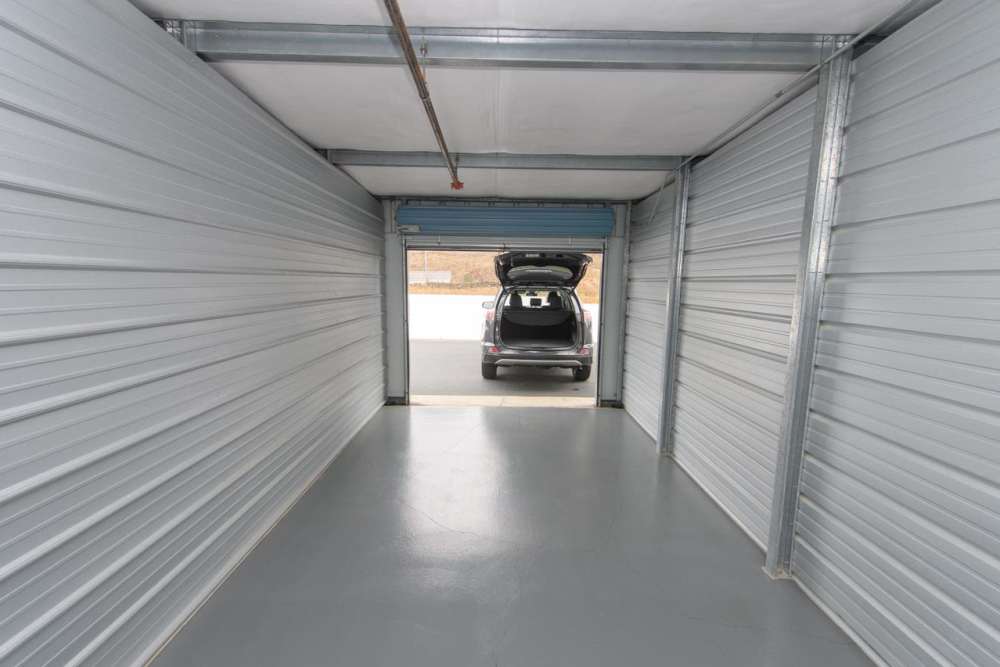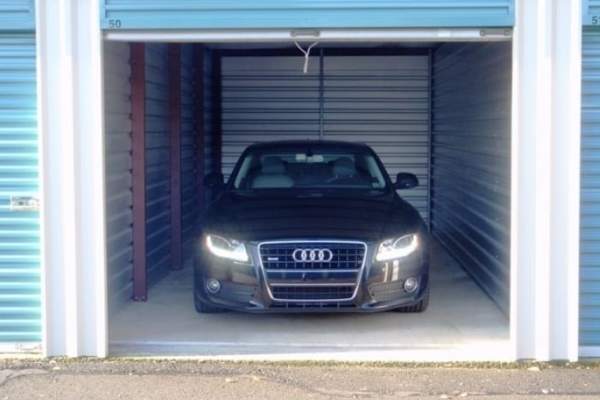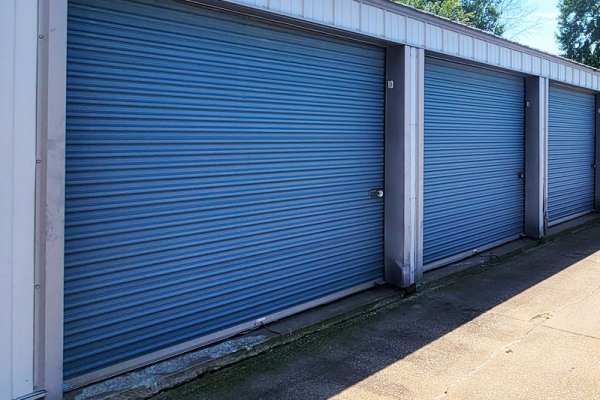- Battery Care: For long-term storage, connect the battery to a trickle charger to keep it charged without overcharging. For shorter periods, disconnecting the battery might suffice to prevent drain.
- Fluids Check: Periodically check the levels and condition of your vehicle's fluids. It's wise to change the oil before storage and consider refreshing other fluids if the storage period extends beyond several months.
- Tire Pressure: Check the tire pressure and inflate the tires to the recommended level to prevent flat spots. For very long-term storage, consider placing the vehicle on jack stands to relieve pressure on the tires and suspension.
-
Proper maintenance during storage is as crucial as the initial preparation. By taking these steps to care for your vehicle while it's stored, you can avoid common problems associated with long-term storage, such as battery issues, tire damage, fluid degradation, and pest infestation. Regularly monitoring and maintaining your stored vehicle ensures it remains in excellent condition, ready for the road when you are. Effective maintenance during storage not only preserves your vehicle’s operational integrity but also helps maintain its value and extend its lifespan.




modSTORAGE | Vehicle Storage
The Best-In-Class Storage Solutions For
Car, Truck Van, RV or Classic Automobile self-storage near modSTORAGE.
Introduction to Vehicle Storage
Vehicle storage emerges as a crucial consideration for a wide range of individuals—from car enthusiasts with prized collectibles to the average person needing to safeguard their vehicle during extended travel or seasonal changes. Understanding the nuances of vehicle storage is not merely about finding a place to park; it's about preserving the vehicle's condition, ensuring its security, and protecting its value over time. Whether it's a classic car requiring meticulous care, a recreational vehicle awaiting the next adventure, or an everyday vehicle needing temporary shelter, the right storage solution can make all the difference.
The Essence of Vehicle Storage
At its core, vehicle storage is about protection and preservation. Vehicles are not only significant financial investments but often hold sentimental value for their owners. The threat of environmental damage, vandalism, or theft can pose significant risks to vehicles left unprotected. Consequently, vehicle storage is not just a practical concern but a proactive measure to mitigate these risks.
Why Vehicle Storage Matters
For seasonal vehicles such as convertibles or motorcycles, winter months can pose a threat to their condition if not stored properly. Similarly, individuals who travel for extended periods need a secure place to store their vehicles, safeguarding them against potential damage or theft. Moreover, in urban areas where parking space is at a premium, vehicle storage offers a viable solution to keep additional vehicles. For collectors, proper storage is essential for maintaining the pristine condition of classic or collectible cars, ensuring these vehicles not only retain but potentially increase in value over time.
Navigating the Options
The vehicle storage landscape offers various solutions tailored to different needs and circumstances. From indoor, climate-controlled facilities that offer the highest level of protection for high-value vehicles to outdoor, covered spaces for short-term needs, understanding the options is key. Each storage solution offers its own set of benefits and considerations, including cost, security features, accessibility, and protection from the elements.
Preparing for Storage
The process of preparing a vehicle for storage is as critical as the storage choice itself. Proper preparation involves more than just parking and locking the vehicle; it includes steps to ensure the vehicle’s engine, battery, tires, and exterior are protected during its storage period. This preparation can prevent costly maintenance issues and ensure that the vehicle remains in top condition, ready for use when needed.
Choosing to store a vehicle is a significant decision that underscores the importance of preserving one's investment and passion. As we delve deeper into the topics of vehicle storage, including preparation, maintenance during storage, legal and insurance considerations, and selecting the right storage facility, our goal is to equip vehicle owners with the knowledge and insights to make informed decisions. Proper vehicle storage is an essential aspect of vehicle ownership, providing peace of mind and ensuring that each vehicle remains a source of pride, joy, and utility for years to come.
Reasons for Vehicle Storage
Vehicle storage is sought after for a variety of reasons, each reflecting the diverse needs and lifestyles of vehicle owners. From safeguarding seasonal vehicles to accommodating long-term travel plans, the motivations behind seeking vehicle storage solutions are as varied as the vehicles themselves. Understanding these reasons can help tailor storage solutions to fit specific requirements, ensuring optimal protection and preservation of the vehicle. Here are some common scenarios that prompt the need for vehicle storage.
Seasonal Storage
- Winter Storage for Convertibles and Motorcycles: Owners of convertibles, motorcycles, or any vehicle particularly vulnerable to winter conditions often seek storage to protect their vehicles from salt, ice, and cold weather, which can lead to rust and mechanical issues.
- Summer Storage for Snowmobiles and Winter Gear: Conversely, snowmobiles and vehicles primarily used in winter conditions may require safekeeping during the summer months to prevent damage from heat and humidity.
Extended Travel or Deployment
- Individuals who travel for extended periods, whether for work, personal reasons, or military deployment, require secure storage options to ensure their vehicle remains safe and well-maintained in their absence.
Lack of Parking Space
- Urban dwellers or those with limited parking may opt for vehicle storage solutions to manage extra vehicles that cannot be accommodated at their residence, especially in cities where parking space is at a premium.
Collectible and Investment Vehicles
- Collectors of classic, antique, or investment vehicles utilize storage to maintain the vehicle's condition and value. Such vehicles often require climate-controlled environments to preserve their pristine state.
Transition Periods
- Individuals undergoing transitions such as moving, selling a home, or awaiting the construction of a new residence may need temporary storage for their vehicles until they can secure a more permanent location.
Business and Fleet Vehicles
- Businesses with fleet vehicles that are not in continuous use or are seasonal in nature might use vehicle storage facilities to manage their assets efficiently, reducing wear and tear and optimizing operational costs.
Conclusion
The decision to use vehicle storage is driven by a variety of needs, from practical considerations like space and protection from the elements to more strategic reasons such as preserving the value of an investment or collectible vehicle. Recognizing the specific reasons for seeking vehicle storage can guide vehicle owners in selecting the most suitable storage solution, ensuring their vehicle remains in optimal condition for its next journey on the road. Whether it’s shielding a cherished convertible from the harshness of winter, keeping a classic car in show-ready condition, or simply finding a temporary home for a vehicle during a life transition, the right vehicle storage solution exists to meet every need.
Preparing Your Vehicle for Storage
Proper preparation is key to ensuring your vehicle remains in excellent condition while in storage, regardless of whether it's for a short stint or an extended period. This preparation safeguards against potential issues such as battery drain, tire damage, and deterioration of fluids, which can occur when a vehicle is not actively used. Follow these comprehensive steps to prepare your vehicle for storage, maintaining its value and operability for when you're ready to hit the road again.
Clean and Detail the Vehicle
- Exterior Wash: Thoroughly wash your vehicle to remove dirt, salt, and contaminants that can cause rust or paint damage over time. Apply a coat of wax to protect the paint surface.
- Interior Clean: Vacuum and clean the interior to remove food particles and other materials that could attract pests. Consider a professional detailing service for a comprehensive clean.
Fluid Maintenance
- Change the Oil: Replace old oil with fresh oil to prevent corrosive substances from damaging the engine. This is particularly important for long-term storage.
- Top Off Fluids: Ensure all other fluids, including brake fluid, coolant, and windshield washer fluid, are at appropriate levels. This prevents condensation and ensures your vehicle is ready to go when taken out of storage.
Tire Care
- Inflate Tires: Properly inflate all tires to the recommended pressure to prevent flat spots from forming during storage. For long-term storage, consider placing the vehicle on jack stands to relieve pressure on the tires and suspension.
Battery Maintenance
- Disconnect or Use a Trickle Charger: For short-term storage, disconnecting the battery can prevent drain. For longer periods, a trickle charger maintains the battery's charge without overcharging.
Protecting Against Pests
- Close Openings: Plug any openings, such as the exhaust pipe or air intake, to prevent rodents or insects from entering. Use breathable materials like steel wool (for exhaust pipes) that can be easily removed later.
Choose the Right Cover
- Use a Breathable Car Cover: If storing a vehicle indoors, use a breathable cover to protect against dust while preventing moisture buildup. For outdoor storage, ensure the cover is weatherproof and securely fastened to withstand elements.
Legal and Administrative Preparations
- Insurance Adjustments: Contact your insurance provider to adjust your policy for the storage period if applicable. Some insurers offer reduced rates for stored vehicles not in use.
- Registration and Documentation: Ensure your vehicle's registration is up-to-date, or note any necessary actions if the registration will expire during storage.
Taking the time to properly prepare your vehicle for storage can prevent numerous maintenance issues and ensure your vehicle remains in prime condition, ready for use. Each step, from thorough cleaning to fluid maintenance and battery care, plays a crucial role in protecting your vehicle. By following these guidelines, vehicle owners can have peace of mind knowing their vehicle is well-preserved during its storage period, safeguarding their investment and ensuring many more miles of enjoyable driving ahead.
Maintenance During Storage
Maintaining your vehicle during its storage period is vital to ensuring it remains in top condition and is ready to drive once you take it out of storage. Even when not in use, vehicles can undergo changes that might affect their performance and appearance. Here are essential maintenance tips and practices to help protect your vehicle during storage, minimizing the risk of damage and the need for repairs upon return to use.
- Documentation: Keep a record of all maintenance activities performed before and during storage. This can help ensure a smooth transition back to regular use.
- Plan a Service Check: Schedule a service check-up for your vehicle after taking it out of storage to ensure all systems are operational, and the vehicle is safe to drive.
- Release the Parking Brake: If storing your vehicle for an extended period, avoid using the parking brake, which can become stuck or cause the brake pads to adhere to the rotors. Use wheel chocks to secure the vehicle instead.
- If possible, ensure your storage space has some ventilation to prevent the buildup of musty odors or moisture inside the vehicle.
- Use a Car Cover: Even indoors, a breathable car cover can protect your vehicle from dust and moisture. Ensure the cover fits snugly and is designed for your vehicle type.
- Moisture Absorbers: In humid environments, placing moisture absorbers or silica gel packs inside the vehicle and its storage area can help prevent mold and mildew.
- Prevent Entry: Seal any openings where pests could enter, such as exhaust pipes or air intakes, using breathable materials. Check the vehicle occasionally for signs of pests and take action if necessary.
- Use Repellents: Consider placing natural repellents, like mothballs or cotton balls soaked in peppermint oil, around the vehicle to deter rodents and insects.
Choosing the Right Storage Facility
Selecting the right storage facility for your vehicle is a decision that requires careful consideration of several factors. From the type of storage to the facility's security measures, each aspect plays a crucial role in ensuring your vehicle is well-protected during its stay. Whether you're storing a classic car, a recreational vehicle, or simply need to free up some driveway space, understanding what to look for in a storage facility can help you make an informed choice. Here are key considerations when choosing the right vehicle storage facility.
Indoor vs. Outdoor Storage
- Indoor Storage: Offers the best protection from weather elements, dust, and potential physical damage. It's ideal for classic cars, luxury vehicles, or any vehicle that you want to keep in pristine condition. Climate-controlled options can provide an optimal environment for preservation.
- Outdoor Storage: A more cost-effective solution that can be suitable for short-term storage or for vehicles less affected by environmental conditions. Opt for covered options if available, to offer some protection against the elements.
Security Features
- Look for facilities with robust security measures, including 24/7 surveillance cameras, gated access, security personnel, and individual alarm systems for each storage unit. The level of security can vary widely among facilities, so choose one that offers peace of mind.
Climate Control
- For vehicles sensitive to temperature and humidity changes, such as classic cars or those with leather interiors, a climate-controlled environment is essential. This feature helps maintain a consistent environment, protecting your vehicle from extreme temperatures and humidity that can cause damage over time.
Accessibility
- Consider how often you'll need access to your vehicle. Some facilities offer 24/7 access, while others have more restricted hours. Ensure the facility's access policies align with your needs, especially if you anticipate frequent visits.
Location
- The facility's location is another important factor. A convenient location near your home or work can make it easier to access your vehicle when needed. However, facilities located in less dense areas may offer lower rates.
Insurance and Liability
- Understand the facility's insurance coverage and what is included in your rental agreement. It's crucial to know how your vehicle is protected under the facility's policy and whether you need to maintain or adjust your own vehicle insurance.
Facility Reputation and Reviews
- Research the facility's reputation and read reviews from other customers. Positive feedback and testimonials can provide additional reassurance about the quality and reliability of the storage service.
Cost
- Compare prices among different facilities, but remember that the cheapest option isn't always the best when it comes to protecting your valuable asset. Consider the value of the features and security measures offered in relation to the cost.
Choosing the right vehicle storage facility involves weighing several factors to find the best fit for your needs and preferences. From the type of storage and security features to climate control options and the facility's location, each consideration plays a part in ensuring your vehicle is safely stored and maintained. Take the time to visit potential facilities, ask questions, and assess the level of service provided to make an informed decision that will keep your vehicle secure and in excellent condition during its storage period.
Legal and Insurance Considerations for Vehicle Storage
When storing a vehicle, understanding the legal and insurance implications is crucial to safeguarding not only your vehicle but also your financial investment. These considerations ensure you're fully aware of your rights and responsibilities, as well as the protections in place for your stored vehicle. Here's an exploration of the key legal and insurance aspects you should consider.
Legal Considerations
- Storage Facility Contracts: Thoroughly review any contracts or agreements with the storage facility. Pay special attention to clauses related to liability, access rights, payment terms, and procedures for dispute resolution.
- Local Regulations and Compliance: Be aware of any local regulations that might affect vehicle storage, such as zoning laws for home storage solutions or environmental regulations that apply to storage facilities.
- Security Measures: Understand the security measures promised by the storage provider and their obligations for safeguarding your vehicle. This is particularly important in the event of theft or vandalism.
Insurance Considerations
- Coverage During Storage: Contact your insurance provider to discuss how your current policy applies to a stored vehicle. Some policies may offer reduced rates for vehicles in storage since they're not being driven, but it's essential to confirm that comprehensive coverage for theft and damage remains in effect.
- Storage Facility's Insurance: Inquire about the storage facility's insurance coverage. A reputable facility should have insurance to cover damages or loss due to their negligence. However, this may not cover all scenarios, so understanding the extent of their coverage is critical.
- Additional Insurance: Consider whether you need to purchase additional insurance coverage for the duration of the storage period. This could be necessary if your current policy doesn't fully cover certain risks, such as natural disasters, or if the value of your vehicle exceeds standard coverage limits.
Documenting the Vehicle's Condition
- Prior to storage, document the vehicle's condition with photographs and detailed notes. This can be crucial if you need to file an insurance claim for damages that occur while the vehicle is stored.
Insurance Discounts and Adjustments
- Some insurance companies offer discounts for vehicles stored for extended periods. You might be able to suspend portions of your coverage that apply to driving while keeping comprehensive coverage active. Discuss these options with your insurance agent to understand potential savings without compromising protection.
Notification Requirements
- Inform your insurance provider about your intent to store the vehicle, including the location and duration of storage. Failure to notify them might affect your coverage or lead to issues if a claim needs to be made.
The legal and insurance aspects of vehicle storage are critical components of a comprehensive storage plan. They ensure that both the vehicle owner and the storage provider understand their responsibilities and that the vehicle is adequately protected against potential risks. Taking the time to address these considerations can prevent unforeseen complications, providing peace of mind while your vehicle is out of sight but assuredly not out of protection. By staying informed and proactive, vehicle owners can navigate the complexities of vehicle storage with confidence.





Retrieving Your Vehicle from Storage
Taking your vehicle out of storage isn't as simple as just starting the engine and driving away. After an extended period of inactivity, your vehicle requires a thorough check to ensure it's road-ready and safe. Proper reactivation involves several crucial steps, designed to address any potential issues that might have arisen during storage. Here's how to safely retrieve your vehicle from storage, ensuring a smooth transition back to regular use.
Visual Inspection
- Begin with a comprehensive visual inspection of your vehicle’s exterior and interior. Look for any signs of rodent activity, mold growth, or unexpected damage.
- Check under the hood for any evidence of pests that might have nested in the engine bay or chewed on wires.
Check Fluids
- Inspect all fluid levels (oil, coolant, brake fluid, and transmission fluid) and condition. If any fluids appear dirty or are below recommended levels, top them up or change them before starting your vehicle.
- Look for any leaks that may have developed during storage.
Battery Check
- If you disconnected the battery, reconnect it, ensuring the terminals are clean and tight. If the battery was left connected or on a trickle charger, inspect it for any signs of corrosion.
- Test the battery’s charge. If the vehicle doesn’t start, the battery may need to be charged or replaced.
Tire Inspection
- Check the tire pressure and inflate the tires to the recommended level if they’ve lost air during storage.
- Inspect the tires for flat spots, cracks, or any other damage. Driving on damaged tires can be dangerous.
Brake System
- Before driving, check the brake system. Press the brake pedal to ensure it feels firm and doesn’t sink to the floor.
- If the vehicle was stored with the parking brake engaged and it now feels stuck, it may require a gentle release or professional attention.
Engine and Exhaust
- Remove any covers or plugs you used to block the exhaust or air intake to prevent pests from entering.
- Listen for unusual noises upon starting the engine for the first time. It’s normal for the engine to sound rough momentarily if it hasn’t been started for a while, but persistent unusual noises warrant further investigation.
Lighting and Electrical Systems
- Test all lights, signals, and electrical systems to ensure they're functioning correctly. Check the headlights, brake lights, turn signals, interior lights, and dashboard indicators.
Take a Short Test Drive
- Before using the vehicle for regular driving, take a short test drive to assess its performance. Pay attention to the vehicle’s handling, braking, and any unusual noises.
- This initial drive can help highlight issues that need addressing after storage and ensure the vehicle is operating safely.
Reactivate your vehicle with care and attention to detail, ensuring it transitions smoothly from storage back to active use. This thorough process not only safeguards your vehicle’s longevity but also ensures your safety and the safety of others on the road. Regular maintenance doesn’t stop once the vehicle is out of storage; continue to monitor its performance and address any issues that may arise. Properly retrieving your vehicle from storage is the final step in the cycle of vehicle care, ensuring it remains a reliable and enjoyable part of your life.
Post-Storage Vehicle Maintenance
Bringing a vehicle out of storage and ensuring it's ready for regular use involves more than just a quick check; it's about systematically ensuring each critical system is operational and safe. After the reactivation process, it's equally important to understand the ongoing maintenance needs of your vehicle to keep it performing at its best. Here are additional steps and considerations for maintaining your vehicle post-storage.
Schedule a Professional Inspection
- Consider taking your vehicle to a professional mechanic for a thorough inspection after storage, especially if it was stored for an extended period. A professional can identify issues that might not be immediately apparent, ensuring your vehicle is in top condition.
Engine Oil and Filter Change
- Even if you changed the oil before storage, it’s a good practice to change it again after taking the vehicle out of storage. This ensures any contaminants that may have settled or accumulated are removed, protecting your engine’s longevity.
Check and Replace Air Filters
- Inspect the air filter and cabin filter for any signs of mold or blockage, especially if the storage period was long or if the storage conditions were less than ideal. Replacing these filters can improve air quality and engine performance.
Reassess Tire Condition and Alignment
- After a few days of regular driving, reassess your tire condition. Look for any signs of wear or damage that weren’t apparent during the initial inspection. Consider a tire rotation or alignment check to ensure even wear and optimal handling.
Fluids Flush and Replacement
- Depending on how long the vehicle was stored, consider flushing and replacing other fluids in the vehicle, such as brake fluid, coolant, and transmission fluid. This can prevent corrosion and wear within these systems.
Brake System Check
- Pay close attention to the brake system during your first few drives. If you notice any reduced responsiveness or hear unusual noises, have the brake pads, rotors, and fluid inspected and replaced if necessary.
Monitor Battery Health
- After reactivating your vehicle from storage, keep an eye on the battery’s performance. If you notice slow starts or electrical issues, have the battery tested and replace it if it’s not holding a charge adequately.
Update Your Insurance
- If you adjusted your insurance coverage while your vehicle was in storage, make sure to update your policy once the vehicle is back in regular use. This ensures you have comprehensive coverage appropriate for an active vehicle.
Emphasizing Regular Care
Maintaining your vehicle post-storage is an ongoing commitment that extends beyond the initial reactivation phase. Regular maintenance checks, staying vigilant about any changes in performance or appearance, and addressing issues promptly can significantly extend your vehicle's lifespan and enhance your driving experience. Proper care ensures that the time, effort, and resources invested in storing your vehicle pay off, allowing you to enjoy your vehicle in its best condition for years to come.
Maximizing Vehicle Longevity and Value Through Strategic Storage
The journey through understanding the intricacies of vehicle storage underscores its undeniable value in preserving both the mechanical integrity and aesthetic appeal of vehicles across various scenarios. From seasonal storage needs to long-term care for cherished collectibles or practical solutions during life's transitions, vehicle storage emerges as a pivotal aspect of vehicle ownership and care. This exploration has traversed the spectrum of considerations, from initial preparation steps to the selection of storage solutions, legal and insurance aspects, and the crucial maintenance routines during and after storage. Each element contributes to a holistic strategy designed to protect your vehicle, ensuring it remains a source of pride, utility, and enjoyment.
Emphasizing Preparation and Choice
The importance of meticulously preparing your vehicle for storage cannot be overstated. This process, detailed in initial steps, is the foundation of effective vehicle storage, safeguarding against common issues that can arise from prolonged inactivity. Equally critical is the informed selection of a storage solution that aligns with your vehicle's specific needs and your personal circumstances. Whether opting for a climate-controlled indoor facility for a classic car or an outdoor lot for a recreational vehicle, understanding the nuances of each option enables owners to make choices that best protect their vehicles.
Legal and Insurance Vigilance
Navigating the legal and insurance landscape is a necessary step in ensuring that your vehicle is not only physically protected but also secured against potential financial losses. Engaging with these aspects proactively prevents complications and ensures that, in any eventuality, you are prepared and protected.
Maintenance: The Ongoing Commitment
The commitment to vehicle maintenance, both during storage and after retrieving your vehicle, is pivotal in extending its lifespan and operational efficiency. This continuous care ensures that your vehicle remains in peak condition, ready for the road ahead, and preserves its value over time.
The Road Ahead
As we conclude this comprehensive guide to vehicle storage, it's clear that the effort invested in proper storage practices pays dividends in vehicle longevity, reliability, and enjoyment. Whether you're storing a vehicle for the short term or as part of a long-term care strategy for a valued collectible, the principles outlined here provide a roadmap for doing so effectively.
In embracing these practices, vehicle owners can enjoy peace of mind, knowing that their vehicle is not just stored but preserved, maintained, and protected, ready for whatever journeys lie ahead. Let this guide inspire you to approach vehicle storage with the diligence and care it deserves, ensuring that your vehicle continues to bring you joy and utility for many years to come.
